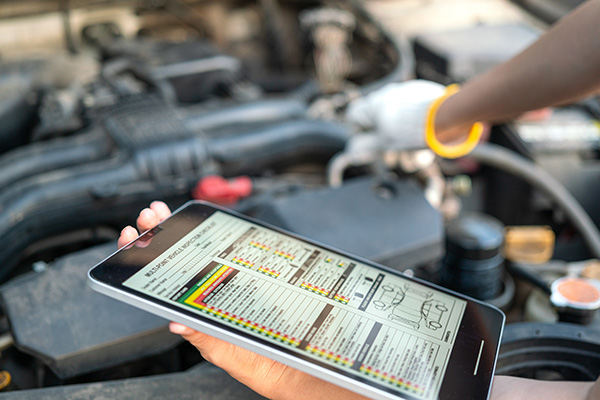
Staying ahead of vehicle maintenance is one of the most effective ways to avoid unexpected repairs, preserve your car's resale value, and ensure it performs well every day. While modern vehicles are more reliable than ever, they still require routine care. The best way to stay on top of it? Establish a simple and consistent maintenance routine tailored to your driving habits and your vehicle’s specific needs.
A good maintenance routine isn’t about constantly visiting the shop—it’s about following a practical schedule that keeps your vehicle safe and efficient year-round.
Why Regular Maintenance Matters
Even if your car seems to be running fine, wear and tear is happening under the surface. Fluids slowly break down, filters become clogged, belts stretch, and brake components wear away. Neglecting these elements doesn’t usually cause an immediate problem—but over time, skipped maintenance can lead to expensive repairs or unsafe driving conditions.
Routine upkeep also helps your vehicle maintain better fuel economy and responsiveness. Something as small as a dirty air filter or underinflated tire can impact performance. By making maintenance part of your schedule, you give your car the best chance at a long, reliable life.
Start With Your Owner’s Manual
The best place to begin is with the maintenance schedule provided by your vehicle’s manufacturer. Your owner’s manual outlines when to service key components based on mileage or time intervals. You’ll find guidelines for oil changes, brake inspections, transmission service, coolant flushes, and more.
These recommendations are tailored to your specific make and model, and they take into account how the vehicle was engineered. If your manual suggests changing the oil every 7,500 miles, there’s no need to do it every 3,000 unless your driving conditions are severe. Likewise, if it recommends a transmission fluid change every 60,000 miles, don’t assume that it’s safe to wait longer.
Organize Service by Time and Mileage
It’s helpful to break down maintenance tasks into different timeframes. Some items need monthly attention, while others can go much longer between checks.
Monthly, make it a habit to visually inspect your tires, check for oil or fluid leaks, and ensure your lights are working. You can also check tire pressure and refill windshield washer fluid.
Every 3 to 6 months, most drivers should schedule an oil change and have the air filter, battery, and belts inspected. This is also a good time for tire rotation, which promotes even wear and helps prolong tire life.
At 12-month intervals, consider more in-depth inspections like brake system checks, coolant level testing, alignment evaluations, and cabin air filter replacements. Depending on mileage, you may also need to flush or replace fluids such as transmission, brake, or power steering fluid.
Over time—at 60,000, 90,000, or 100,000 miles—you’ll reach milestones that may require new spark plugs, timing belt service, or suspension evaluations. These larger services are important to catch before they affect engine or drivetrain performance.
Adjust for Driving Conditions
Not every driver puts the same strain on their car. If you frequently drive in stop-and-go traffic, tow a trailer, or live in a hot, dusty climate, your maintenance needs may be more demanding. These conditions can wear out oil faster, clog filters sooner, and put added stress on brakes and suspension components.
Even short, frequent trips where the engine doesn’t fully warm up can contribute to sludge buildup over time. That’s why it’s important to assess your own driving habits and, when in doubt, err on the side of more frequent maintenance rather than less.
Track Your Service History
Keeping a record of all maintenance performed is one of the smartest things you can do for your vehicle. Whether you use a phone app, a notebook in your glove box, or rely on your shop to keep track, having a log of past services makes future visits more efficient.
It also helps with diagnostics—technicians can eliminate certain possibilities if they know a fluid was just replaced or a filter was recently changed. And if you ever sell your car, a complete service record reassures potential buyers that the vehicle has been properly cared for.
Make Maintenance Convenient
If maintenance feels like a hassle, it’s easy to let things slide. That’s why choosing a trusted shop and setting up reminders is key. Schedule services ahead of time whenever possible, and ask your technician if you can combine smaller services during a single visit to save time.
Some shops also offer digital maintenance reminders via email or text, which can be incredibly helpful. By treating maintenance like part of your calendar rather than a chore, you’ll be less likely to fall behind.
Trust Hometown Tire and Auto in Liberty, TX, for Routine Vehicle Maintenance
At Hometown Tire and Auto in Liberty, TX, we make vehicle maintenance simple, effective, and tailored to your needs. Whether it’s time for an oil change, brake inspection, fluid flush, or just a check-up, our team is here to help you stay ahead of repairs and drive confidently.
Let us help you create a maintenance schedule that suits your lifestyle. Visit us today and keep your vehicle running strong for the miles ahead.